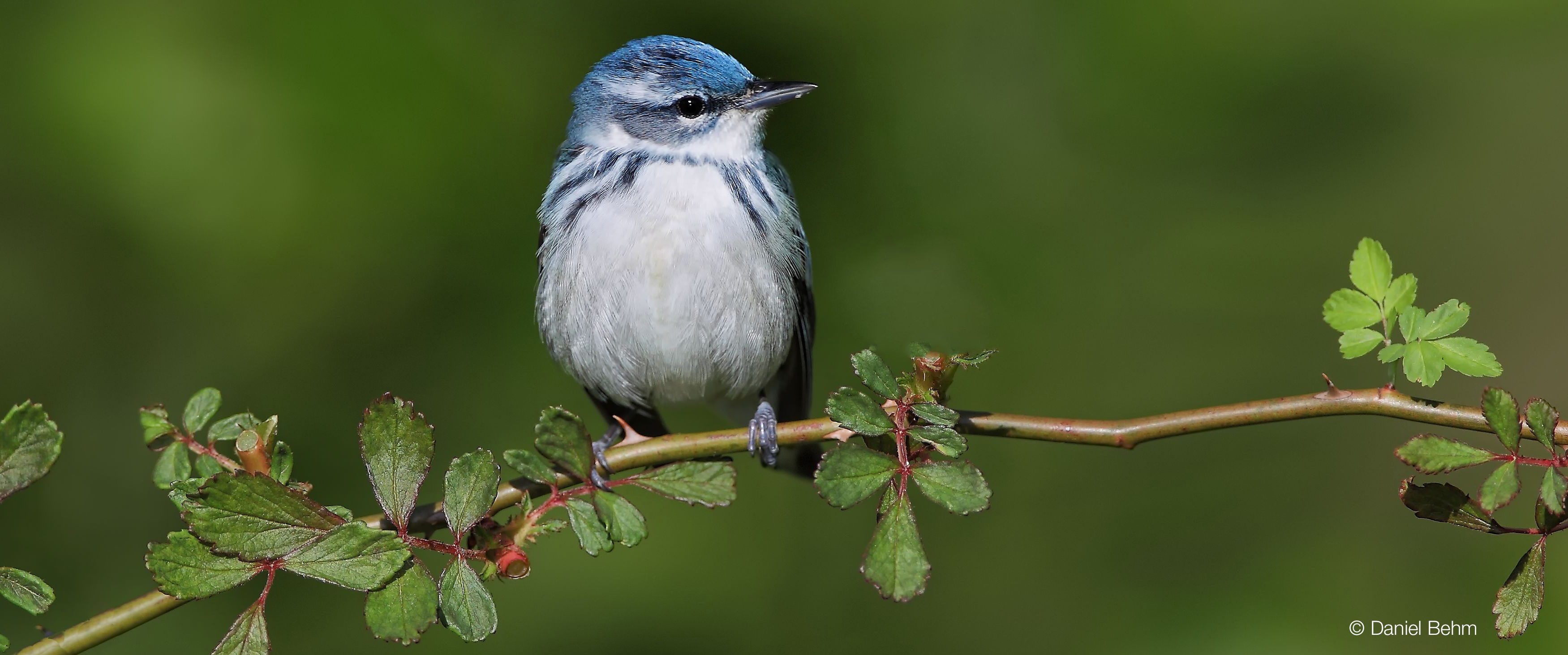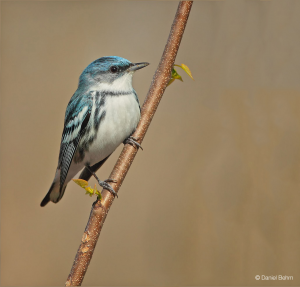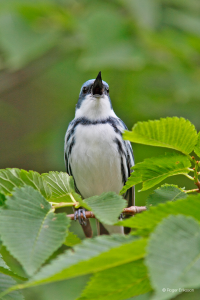
Cerulean Warbler Tours
May 12–21, 2025, at 8 a.m.
Michigan Audubon is offering Cerulean Warbler Tours in 2025. Tours will embark from the Otis Farm Bird Sanctuary in Hastings to search for this dazzling warbler. Experienced guides will lead this caravan tour to several Cerulean Warbler nesting territories within the Barry State Game Area, where you may see numerous other deciduous forest species as well.
When: May 12–21, 2025, at 8 a.m.
Where: All tours will meet at the Otis Farm Bird Sanctuary and will be led by local, experienced guides. The Otis Farm Bird Sanctuary is located at 3560 Havens Rd., Hastings, MI 49058.
How to register: Pre-registration is required and will open on February 7, 2025 at 9 a.m. Register here.
Cost: Tours cost $20/person.
Tour sizes will be limited to 20 people or less.
If you have questions regarding Cerulean Warbler tours, please contact us at [email protected] or 517-580-7364.
Accommodations:
- Whispering Waters Campground and Canoe Livery
- Yankee Springs Recreational Area
- Holiday Inn Express in Hastings
- Parkview Motel
- Adrounie House Bed & Breakfast
- Bay Pointe Inn
Map & Directions:
The Otis Farm Bird Sanctuary is located at 3560 Havens Road in Hastings, Michigan*.
*Please note that GPS and online mapping tools may not give an accurate portrayal of this location. Limited roadside directional signage is posted to assist with finding the sanctuary.
We often joke that “there isn’t a straight road to anywhere in Barry County, Michigan.” This is somewhat true, and Barry County’s charming rural roads can wreak havoc on GPS devices and online mapping tools. THE BEST WAY to navigate to the Otis Farm Bird Sanctuary is as follows:
From Goodwill Road, turn south on Havens Road; travel .5 miles and you’ve arrived at the sanctuary
From N Irving Road, turn southwest on Gun Lake Road for 1 mile
From Gun Lake Road, turn south on Irway Road for 1.5 miles
From Irway Road, turn east on Goodwill Road for .3 miles
From Goodwill Road, turn south on Havens road for .5 miles and you’ve arrived at the sanctuary
Note: M-179 may be called 129th Avenue at first and then will change to Chief Noonday Road
From Chief Noonday Road/M-179 turn south on Whitmore Road and travel 2.6 miles
From Whitmore Road turn east onto Goodwill Rd and travel less than 1 mile to Havens Road
From Goodwill Road, turn south on Havens road for .5 miles and you’ve arrived at the sanctuary
 The Cerulean Warbler is a small bird of the deciduous forest treetops, the sky-blue Cerulean Warbler can be difficult to see. Cerulean Warbler is one of the species of highest concern in the eastern United States because of a small total population size and significant declines throughout its range. The North American Breeding Bird Survey estimates a decline of over 2.6% per year between 1966 and 2015, resulting in a cumulative loss of 74% of the population in that time. Partners in Flight estimates a global breeding population of 600,000, with 98% breeding in the U.S., and 2% in Canada. It is a Tri-National Concern Species and a U.S.-Canada Stewardship species and rates a 15 out of 20 on the Continental Concern Score. Cerulean Warbler is on the 2016 State of North America’s Birds’ Watch List, which includes bird species that are most at risk of extinction without significant conservation actions to reverse declines and reduce threats. It is listed as Vulnerable on the IUCN Red List.
The Cerulean Warbler is a small bird of the deciduous forest treetops, the sky-blue Cerulean Warbler can be difficult to see. Cerulean Warbler is one of the species of highest concern in the eastern United States because of a small total population size and significant declines throughout its range. The North American Breeding Bird Survey estimates a decline of over 2.6% per year between 1966 and 2015, resulting in a cumulative loss of 74% of the population in that time. Partners in Flight estimates a global breeding population of 600,000, with 98% breeding in the U.S., and 2% in Canada. It is a Tri-National Concern Species and a U.S.-Canada Stewardship species and rates a 15 out of 20 on the Continental Concern Score. Cerulean Warbler is on the 2016 State of North America’s Birds’ Watch List, which includes bird species that are most at risk of extinction without significant conservation actions to reverse declines and reduce threats. It is listed as Vulnerable on the IUCN Red List.
 By 2080, this already declining Neotropical migrant is projected to have 98 percent of its current summer range shifted away from the current core, but it has potential to expand in the north, according to Audubon’s climate model. Mature hardwood forests that the bird depends on may not exist to the north and the forests expansion may not keep pace with the changing climate.
By 2080, this already declining Neotropical migrant is projected to have 98 percent of its current summer range shifted away from the current core, but it has potential to expand in the north, according to Audubon’s climate model. Mature hardwood forests that the bird depends on may not exist to the north and the forests expansion may not keep pace with the changing climate.
It nests and forages higher in the canopy than most other warblers. They breed in forests with tall deciduous trees and open understories, such as wet bottomlands and dry slopes. The Cerulean Warbler winters in broad-leaved, evergreen forests.
On the wintering grounds in South America, the Cerulean Warbler usually is found in mixed-species foraging flocks, associating with tropical tanagers and other resident species. When renesting after a failed first nest, the female often uses spider web from the old nest to start construction on the new nest. Fresh lining is gathered for the new nest, but spider web may be too valuable and time-consuming to waste. The female Cerulean Warbler has an unusual way of leaving a nest after sitting on it a while. Some people call it “bungee-jumping.” She drops from the side of the nest, keeping her wings folded to her sides, and opens her wings to fly only when she is well below the nest.

